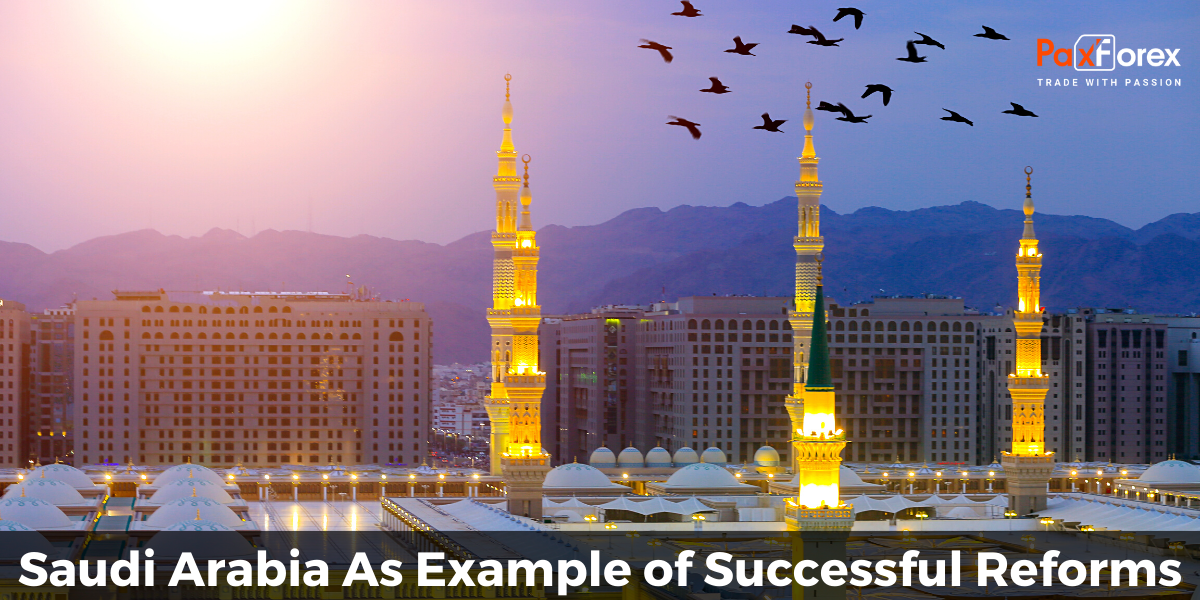
In recent years, the Kingdom of Saudi Arabia shows the best economic performance among the "Big Twenty", IMF says in its report.
Info note: The Group of Twenty Finance Ministers and Central Bank Governors (also known as the G-20) is a group of finance ministers and central bank governors from 20 major economies: 19 countries plus the European Union, which is represented by the President of the European Council and by the European Central Bank.
The report notes the positive outlook for the Saudi economy, which grew by 5.1% thanks to high oil prices, a strong private sector and reasonable budget expenditures. There is a growing country's credit rating, and its banking system has a good level of capitalization and profitability. Since 2012, growth rates of budget expenditures have been decreased, which resulted in a reduction of the deficit in the non-oil sector.
In spring, the country's inflation rate has increased slightly, compared to last year due to higher prices for food and housing. However, the high level of oil prices contributes to maintaining a budget surplus and growing international currency reserves of the country.
Despite the fact that 2013 forecast predicts a general slowdown in economic growth to 4%, the private sector will continue to remain strong. It is expected that oil production will be lower than last year. Also, the reducing of budget expenditures will be continued. By the end of the year, country’s inflation rate will fall because of the global decline in food prices.
In the IMF report also noted that Saudi Arabia plays a leading and stabilizing role in the global oil market. In addition, this country is one of the main sources of financial assistance and support for many developing countries.
Most of the current Saudi population consists of young and well educated people. This is a great opportunity to stimulate economic growth and improve living standards. IMF welcomes the increased investment in the education of the country aimed at improving the professional skills of the population.
In May this year, the leaders of the Saudi Monetary Agency spoke about real facts, showing the significant progress in the economy.
Thanks to the successful structural and administrative reforms, the country has managed to create an attractive and competitive economy. During the period from 2005 to 2012, the growth in non-oil sector of the Saudi economy was 8.2% per year, which is optimal rate of economic growth.
The surplus - excess of revenues over expenses - is kept at 3.1 trillion Saudi riyals. ($1 is approximately 3.8 riyals). Moreover, the level of public debt relative to GDP declined from 39.2% at the end of 2005 to 3.6% at the end of 2012.
International rating agency Fitch has assigned Saudi Arabia an AA rating by the results of ongoing social and economic policy, which means that the country can fulfill its financial and investment commitments with a very low credit risk.







